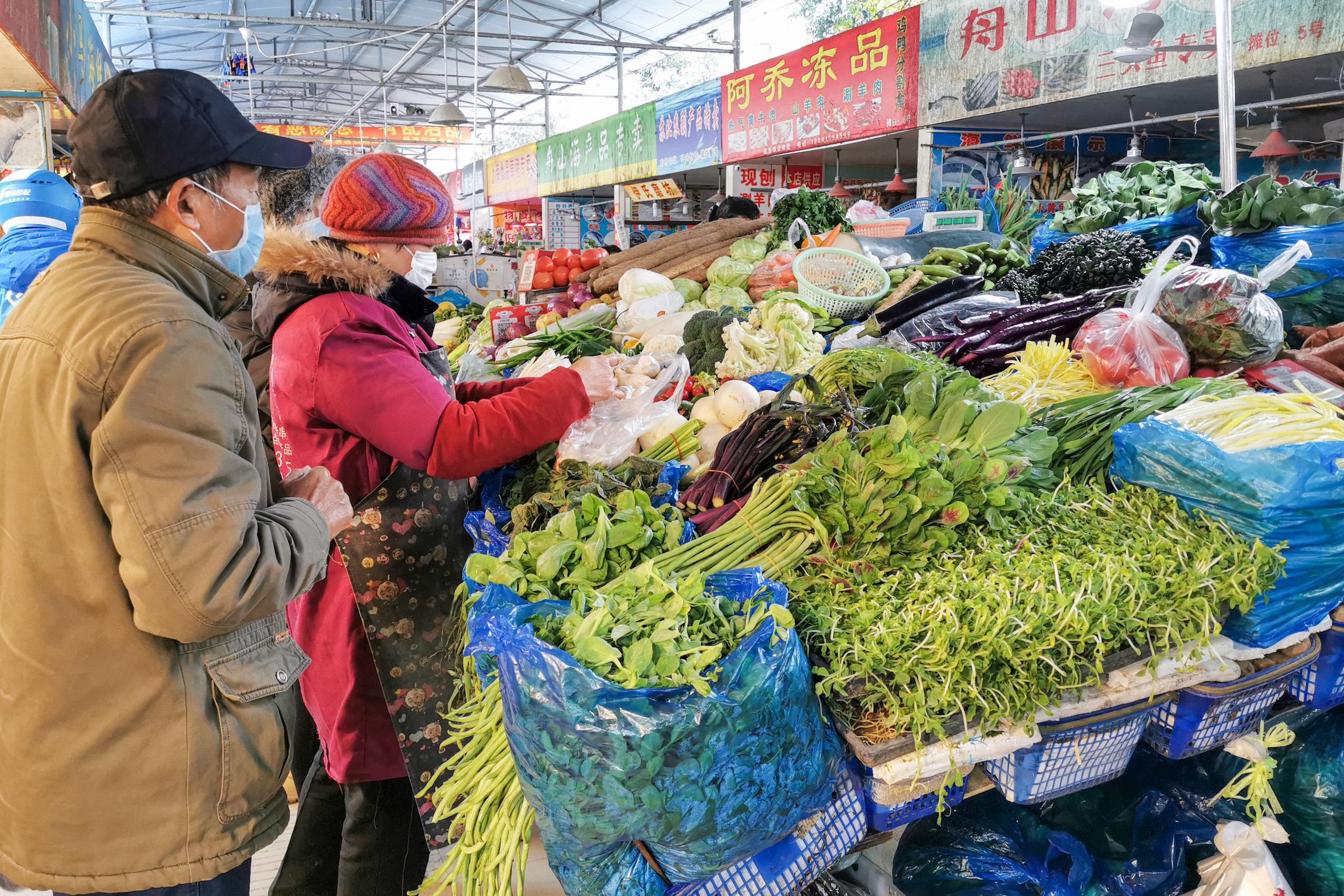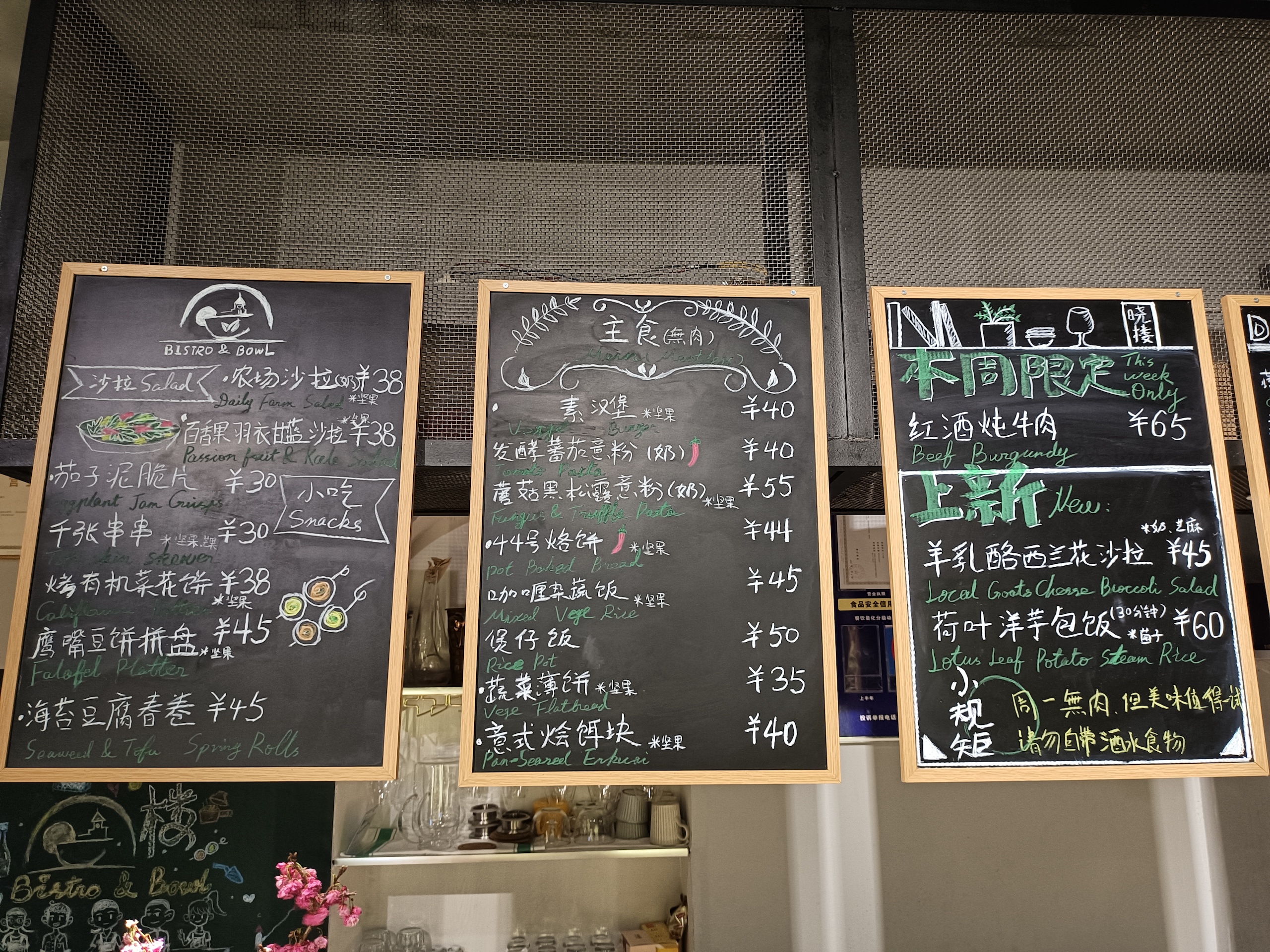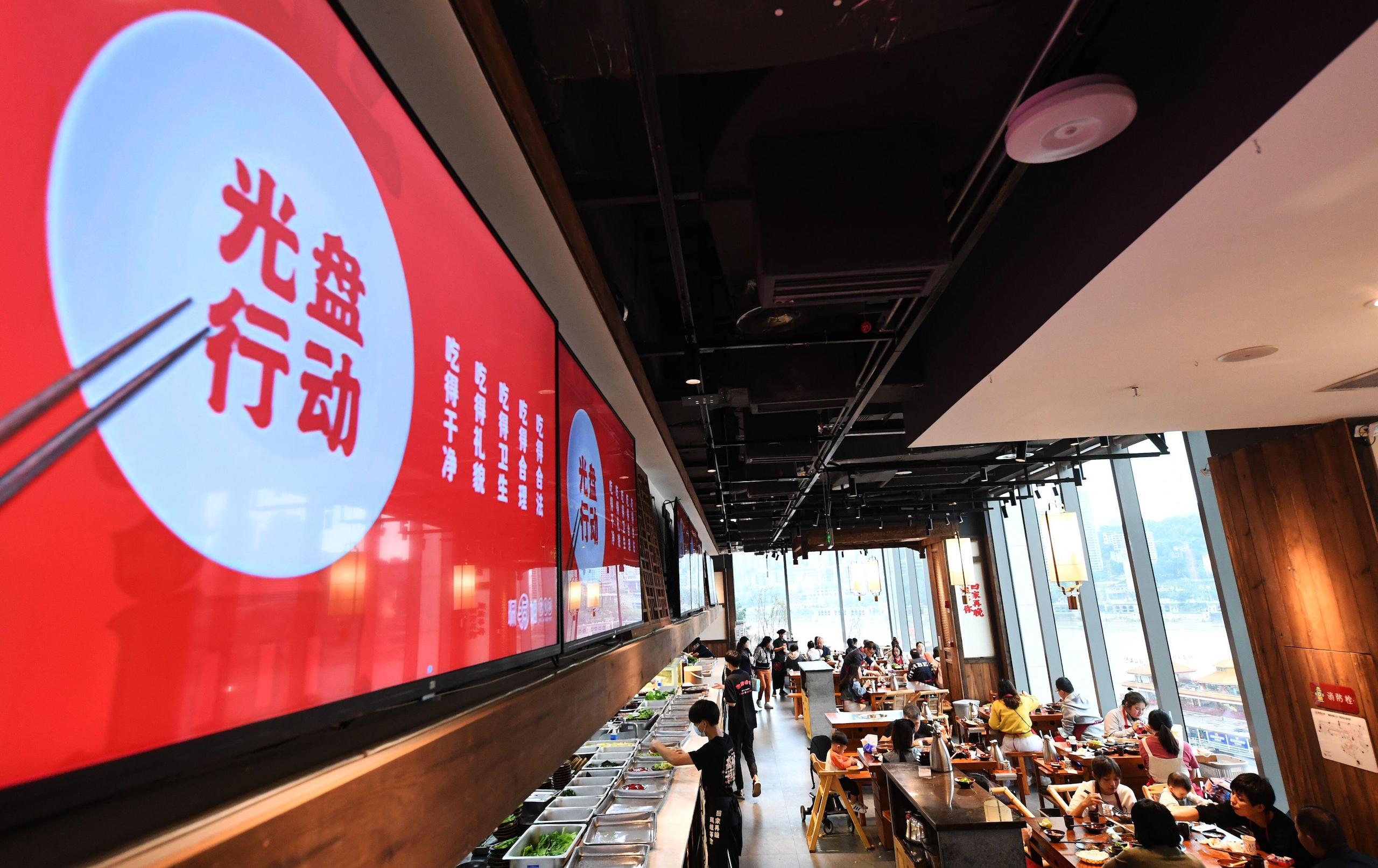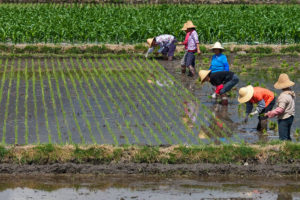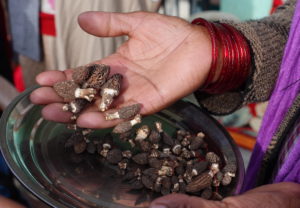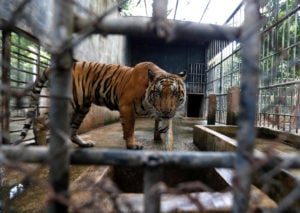There is no kitchen waste at Li Yan’s restaurant: everything gets eaten, reused or composted.
There is no fixed menu, either. The 40-year-old chef buys seasonal local produce fresh from market vendors every day, carrying a bamboo basket on his back. Most elements in the dishes are made from scratch, whether it’s curry paste or bread. Li and his team also make bars of soap using recycled cooking oil.
Li is the co-founder of Bistro & Bowl in Dali, Yunnan province, one of China’s first restaurants to promote a philosophy of sustainable and climate-friendly food.
Although not a strictly vegetarian restaurant, one of its main draws is its variety of plant-based dishes, which usually make up more than three-quarters of the daily menu. Recent hits have included a salad with local goat’s cheese and broccoli, and rice steamed with potato wrapped in lotus leaves. Meat dishes such as beef bourguignon have also featured, but Li only sources free-range meat from local farms.
Li says he wants to use his skills to guide people to eat more healthily and sustainably for the benefit of the Earth. “If I did not do this, I would feel guilty for many, many years,” he tells China Dialogue.
According to a study published in Nature Food, more than one-third of the world’s human-caused greenhouse gas emissions comes from the food system, meaning all steps related to farming, processing, transporting, consuming and disposing of food.
Yet, most governments are overlooking the potential emissions savings that could be realised by transforming this system.
China is home to the world’s largest food system, which was responsible for roughly 13.5% of its greenhouse gas emissions in 2019. The current priority, however, is ensuring food security: in its first document released in 2023, the central government called for “enhanced efforts to stabilise production and ensure the supply of grain and other important agricultural products”. Meanwhile, President Xi Jinping has stressed the significance of food security and increased self-sufficiency – “holding the bowl safely in one’s own hand” – while also “developing ecological and low-carbon agriculture”.
Balancing this food security drive with the country’s emissions reductions goals will be a delicate task – one which experts suggest rests heavily on the plate of government and producers, and the policies and changes they choose to serve up. But consumers also have a seat at the table, and bottom-up action, such as Li’s efforts, could be transformational.
The power of the chef
Li came to understand the impact of the food system on biodiversity and climate during a cooking competition he took part in – and won – in 2020. The event was organised by Good Food Fund, a Chinese non-profit promoting the sustainable transformation of food systems.
Li, who had been a chef for nearly 20 years by then, was shocked to learn about the implications of industrialised farming and animal rearing for the planet. He also learned about how sustainable farming, cooking and dining could improve global ecology, tackle climate change and enable people to live more healthily.
I had never thought that chefs could have so much power… I felt a sense of responsibilityLi Yan, co-founder of Bistro & Bowl
“I had never thought that chefs could have so much power,” Li says. “I suddenly realised that I should do what I could to contribute to a better future for the Earth. I felt a sense of responsibility.”
In May 2021, Li and his business partner opened Bistro & Bowl in the popular tourist town of Dali. In one of the most biodiverse regions in China, the restaurant duly looks to follow the sustainability principles outlined in the Good Food Fund’s Good Food Pledge, an initiative that promotes a low-carbon lifestyle, healthy eating, seasonal produce and reductions in food waste.
Li grows more than 10 types of herbs in-house, including oregano and mint, fertilised using a liquid created with fermented food waste from the kitchen. The restaurant is also a certified participant of “Meatless Monday” through the Good Food Fund, which itself is the official Chinese partner of the global movement encouraging people to practise a plant-based diet one day a week, so as to improve personal health and the environment.
The actions taken at Bistro & Bowl are also real-life reflections of policies and documents released by the Chinese government, including an anti-food waste law introduced in 2021 and the latest dietary guidelines published in 2022 by the Chinese Nutrition Society, a national non-profit, under the guidance of the National Health Commission.
Although none of these directives were published with the direct aim of reducing carbon emissions and tackling climate change, their combined results could bring climate-positive impacts, various experts have told China Dialogue.
Curbing food waste
Elizabeth Robinson is a professor and director of the Grantham Research Institute on Climate Change and the Environment at the London School of Economics. She tells China Dialogue that only 40% of emissions from China’s food system come from actual production, with the remaining 60% relating to processes and actions before and after this stage.
“There are opportunities to reduce emissions along the whole chain,” Robinson says. “In pre-production, fertilisers are an obvious example because you generally make them out of fossil fuels.” Nitrogen fertilisers, for example, are made by mixing nitrogen from the air with hydrogen from natural gas. “As for post-production,” Robinson adds, “one of the big problems is food waste.”
Wasting food is a global problem that has serious climate implications. A 2021 report by the United Nations Environment Programme (UNEP) estimated that roughly 17% of global food production may be wasted, including 11% in households, 5% in catering and 2% in retail (figures are rounded).
If food loss and waste were a country, it would be the third biggest source of greenhouse gasInger Andersen, executive director of UNEP
“If food loss and waste were a country, it would be the third biggest source of greenhouse gas emissions,” Inger Andersen, executive director of UNEP, wrote in the report.
In China, more than 35 million tonnes of food are lost while being stored, transported and processed each year, according to statistics quoted by China Youth Daily. At restaurants, 11.7% of food is wasted by customers, averaging 93 grams per person per meal, the newspaper reports.
China has taken a series of actions to tackle food waste over the past two years to safeguard food security and promote sustainable economic and social development, among other goals.
In August 2020, Xi ordered the country to “resolutely put an end to wasting food”. The following April, the anti-food waste law was introduced, instructing all levels of government to “enhance leadership”, “determine targets and tasks” and “establish a work mechanism” to tackle food waste.
Robinson calls this “a really important policy” and notes that reducing waste can help cut emissions in two ways.
First, food production generates greenhouse gas emissions, such as those associated with fertilisers, mechanisation, rice paddies and even cows’ burping. “Producing that food just to throw it away has a big emissions implication,” she explains.
Second, if food waste ends up in landfills and is broken down by bacteria via anaerobic digestion, methane is emitted.
By simply reducing food waste, Robinson says, “there is a tremendous opportunity to reduce emissions without even changing how we farm or how we eat.”
‘Poultry-multiplying plan’
The Chinese government has also been guiding its citizens to adopt more balanced and diverse diets, though largely for health reasons.
In April last year, the country updated its dietary guidelines, mentioned above, which encourage citizens to consume “plenty of vegetables, fruits, dairy, whole grains and soybeans”, to eat “appropriate amounts of fish, poultry, eggs and lean meat” and to “limit intake of salt, oil, sugar and alcohol”.
Late last year, Xi called on the country to establish a “big food concept”, which aims to promote food diversity on both the production and consumer sides, in a key government report.
Meat consumption in China is expected to continue increasing. Amid this growth, various Chinese reports and research have been encouraging citizens to eat more poultry, instead of pork, beef or lamb, for health, to save animal feed and to protect the environment – while still meeting demand.
For example, in an article explaining the “big food concept”, Globe, a magazine affiliated to state media outlet Xinhua, underscored the importance of choosing white meat over red meat, a major driver of obesity in China.
A flagship report on the agricultural industry’s development, published by the Chinese Academy of Agricultural Sciences (CAAS), also highlighted the benefits of such a swap, as Beijing News reported. It also proposed a “poultry-multiplying plan”.
Mei Xurong, vice-president of CAAS, was quoted saying that poultry was healthier and more efficient in terms of animal feed and emissions than pork (which is the most consumed meat in the country). Mei said modelling showed that nearly 28 million tonnes of feed and over 7 million tonnes of carbon emissions would be saved if the country doubles its poultry production and uses this to replace pork, keeping overall meat production the same.
Alternatively, Mei continued, if the country maintains current beef and lamb production levels and uses additional poultry output to satisfy growing meat demand – as well as replacing some pork production – it would, according to modelling, save over 30 million tonnes of carbon emissions and nearly 15 million tonnes of feed in the year 2030.
A 2018 study published in Science magazine estimated that the greenhouse gas emissions per 100 grams of protein for pork production can be as low as one-seventh of those from beef. Emissions from poultry production, meanwhile, were estimated to be even lower, at about three-quarters those of pork per 100 grams of protein.
Globally, red meat production is the largest driver of greenhouse gas emissions from food. However, concern has also been raised over any global chicken-for-beef shift. A surging poultry industry would itself impact the environment, through air and water pollution, degradation of arable land, habitat destruction and other damages.
Haseeb Bakhtary is a senior consultant at Climate Focus, a thinktank headquartered in Amsterdam. He says it is hard to set a universal rule for people’s eating behaviours for health or environmental reasons because diets are “culturally and geographically specific”.
“What we need to reduce in Europe is meat consumption. We also need to stop wasting food at the household level, buy less and eat less [food] and replace the unhealthy components in our diets with healthy foods,” he tells China Dialogue.
“But there are many other countries in the world where people don’t have access to enough animal-based protein, for example. There, there may need to be balance to increase their meat consumption to a healthy level.”
Top-down vs bottom-up
So far, emissions reduction efforts in China’s food system have largely been driven by government policies on the production side. However, some experts believe consumers have an equally important role.
“In terms of reducing emissions and tackling climate change, many people think these are matters for the government and, therefore, require government policies and technological improvement to push forward the agenda,” Hou Bing, executive director of the Good Food Fund, tells China Dialogue.
But Hou points out that “past practices” and the findings of the latest report from the Intergovernmental Panel on Climate Change – which highlighted the insufficient global pace and scale of climate action plans – show that “emissions-reduction targets cannot be realised solely by top-down policies from the government and technological improvement”.
“To lead to changes, it also needs bottom-up [actions] and joint efforts and participation from multiple parties, such as the government, commercial and social organisations, as well as the general public,” Hou explains.
“Not only the formulation of policies needs to be based on public opinion: their promotion and final implementation will also need to depend on the levels of public understanding and acceptance.”
Hou points to the anti-food-waste campaign promoted in recent years as “an exemplary practice to showcase the joint power of policy and public opinion”.
Patty Fong, programme director of Climate and Health & Wellbeing at the Global Alliance for the Future of Food, tells China Dialogue that food systems, especially those linked to global value chains, are “locked into a system” that affects both production practices and consumption patterns. “We must look at them together holistically,” she says.
Fong thinks consumers do have a role. However, their “food environment” must be factored in, meaning, for example, what types of food are affordable or cheap, and what is being advertised to them.
“There is a role for marketers or retailers. There’s also a role for caterers – whether it’s chefs and restaurants, or healthcare, hospitals and schools,” Fong notes.
Bakhtary points out the importance of public policy: “I am usually hesitant to shift the responsibility of transforming the food system onto consumers… behaviour change takes a long time.”
He says that public policy and regulation will have “a larger and more significant effect and impact” than consumer-led efforts. Ideally, grassroot initiatives and public policy should work hand-in-hand to help the food system transform from different angles, he adds.
Robinson describes three main types of environmental policies that governments can use: rules and regulations, taxes and subsidies, and nudges. “Generally,” she adds, “a combination of all three works best.”
The professor says the whole food system is often not set up for consumers to “actually be empowered to make the right choices”, and that the right policies are essential to enable people to “make good choices that are aligned with healthy eating, healthy environments and animal welfare”. As China and countries around the world strive to improve their food systems and meet climate goals, government policy is therefore “very important”: regulation, Robinson adds, can level the playing field.
